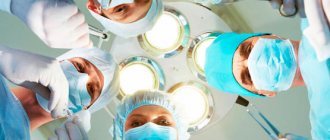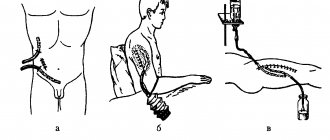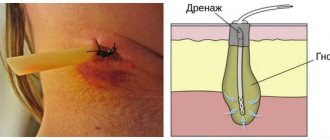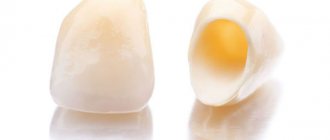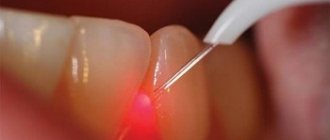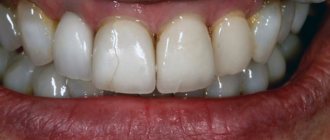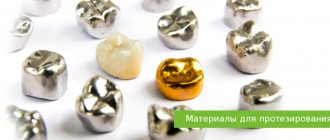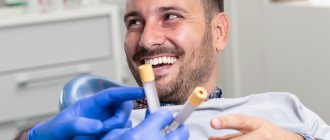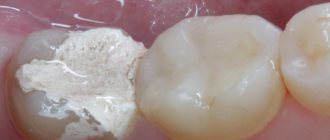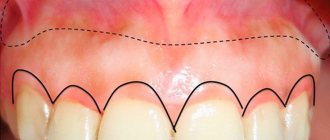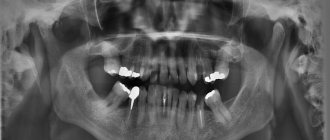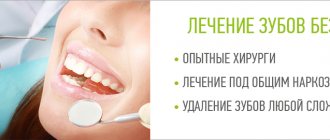What is absorbable suture thread?
Absorbable sutures are a surgical material that can decompose on its own. They come in natural and synthetic varieties and do not require a procedure to remove them during the wound healing process. The main characteristics that they can be characterized by are the period of complete resorption and biological strength.
Depending on the type of raw material, there are threads that are completely biodegradable without any residual components. These include catgut, which is made from simple and chrome-plated elements of animal origin. The period of complete decay is almost 3 months.
Absorbable sutures are broken down by the body over time through processes such as hydrolysis and enzymatic degradation. The time required for this depends on the material, as well as the injection site and individual patient characteristics. The rate of absorption of suture material may be increased in patients with ongoing infection, fever, or protein deficiency.
Why is the wound sutured after pulling out the figure eight?
Wisdom teeth are very insidious and often lead to serious problems. Pulling it out most often resembles an operation. Since the roots of the unit go deep into the gum and can be ornate, tortuous, soft tissue is often excised to extract them. After all solid debris has been removed from the depths of the tissue, the wound is sutured. This is done in order to:
- prevent bleeding;
- protect the blood clot formed in the wound from injury;
- protect the operated area from the accumulation of food debris;
- minimize the risk of damage to the operating area;
- speed up regeneration processes.
It is believed that applying sutures after wisdom tooth removal reduces the likelihood of infection by approximately 90%. This is explained by the fact that pathogens cannot penetrate into the deep layers of the wound.
Where to buy, price
Surgical suture material can be purchased at any specialty store or on websites that sell medical supplies. You do not need to provide a prescription from a doctor to purchase.
The cost of threads varies depending on the manufacturer’s brand, type of raw material, characteristics and purpose:
| Thread type | Price |
| Silk threads (braided, non-absorbable), 36 pcs. in a set of 75 cm each (qty. 25 mm). | 50 rub. per package |
| Polypropylene monofilament thread (non-absorbable material), can have a strength rating of 2/0-5/0. The length of the thread is 45 or 75 cm. | 170 rub. per package with 25 mm needles included. |
| Self-absorbing catgut, 75 cm long, without a needle. | 65 rub. per package (1 pc.) |
| Polypropylene mono, 3/0, 5/0 strength | 76 rub. per package (1 pc.) |
| Absorbable PHA threads braided (synthetic) | 85 rub. per package |
Based on the assortment, it is worth noting that threads are an affordable material. The cost is influenced by such parameters as strength index, length and quantity in the set. Despite their different origins and functional purposes, the price of synthetic and natural materials is almost the same.
Application
Used in medicine as a suture material for various surgical interventions in:
- general surgery;
- traumatology;
- vascular surgery;
- ophthalmology;
- obstetrics;
- gynecology;
- urology;
- plastic surgery;
- orthopedics;
- dentistry.
Sew up with catgut threads:
- vessels;
- soft tissues;
- parts of organs;
- bones;
- muscles;
- fascia.
What material is it made from?
Surgical sutures are used to close most types of wounds. An ideal suture should allow the healing tissue to recover sufficiently so that the incision site remains closed after they are removed or resolved.
All types can be roughly divided into absorbable and non-absorbable materials. Each type has its own classification, where synthetic or natural suture threads are found, as well as monofilament or multifilament materials.
Regardless of the type and classification of suture materials, threads must provide a basic range of functions:
- The ideal seam is the minimum possible seam in width and depth.
- It should provide uniform tensile strength, hold soft tissue securely in the incision area for the required healing time, and then dissolve.
- It should be predictable (in the medical sense in the field of allergies), easy to use.
- The threads may cause minimal body reactions (temperature, itching or irritation).
- The material must form a knot securely.
The choice of the type of suture material largely depends on the clinical picture. For example, mass closure of a midline laparotomy may require the use of a PDS; a vascular anastomosis will likely require prolene, and manual suturing of an intestinal anastomosis may require Vicryl. But to ensure drainage, only a silk suture may be suitable.
How to remove stitches at home
Sometimes it happens that for some reason there is no possibility of going to a medical institution. If the recommended healing period has passed, the wound looks prolonged, how can you remove stitches at home for a person who has never encountered this process before, is afraid and does not understand the sequence of actions?
In this case, it is important not to panic, to use all your composure and utmost care. First of all, you need to remove the bandage from the wound and make sure that it is not dangerous to remove the stitch.
If redness or signs of an inflammatory process are detected in this place, you should refuse to remove the sutures yourself and be sure to consult a doctor, since, most likely, the wound has become infected.
Kinds
Self-absorbable threads for sutures can be divided into several categories depending on the type of cuts:
- absorbable;
- not absorbable;
- wicker;
- synthetic.
When the skin is replaced by a foreign object, the implantation process can cause a soft tissue reaction, which is an absolutely normal mechanism for sensing an object in the human body.
Absorbable absorbable filament material includes:
- monocryl;
- vicryl;
- P.D.S.
When the thread comes into contact with the skin, the hydrolysis process begins:
- Skin closure of a clean surgical wound is most often achieved with an absorbable suture, which provides soft tissue approximation to facilitate the healing process without permanent implantation of foreign tissue.
- Monocryl, developed in the mid-90s, is an absorbable monofilament suture material that has a half-life of 7-14 days, retaining up to 20-30% tensile strength after 2 weeks and is completely absorbed in approximately 100 days.
Monocrylic self-absorbable suture threads - Vicryl is a widely used alternative and differs from monocryl in that it is a woven (multi-filament) material. Braided sutures are useful because they are less likely to weaken the surgical knot, but theoretically have an increased susceptibility to infection and may cause a more localized tissue reaction.
Non-absorbable sutures also include several types of materials:
- nylon;
- ethylone;
- silk;
- prolene
They are used to bring tissues together for a longer period of time. They can be applied to the skin and removed later, or used inside soft tissues and mucous membranes, where they will remain for a long time. Typically, nonabsorbable suture material is used for vascular, anastomotic, bowel, and tendon repairs.
Classification of raw materials is possible only by purpose and type of properties. Threads are divided according to the criterion of naturalness. Natural fibers include materials made from silk and catgut. They are used less frequently as they cause a stronger tissue reaction. However, silk suture material is still routinely used to close surgical drains.
Synthetic - consists of artificial materials (for example, PDS or nylon). Threads tend to be more predictable than natural seams, especially with regard to loss of tensile strength and absorption.
Suture materials can also be divided according to their structure:
- Monofilament suture is a suture made from single strand fibers (for example, nylon, PDS or prolene). They have a lower risk of infection, but also poor node reliability, despite ease of handling.
- Multifilament thread - consists of several threads twisted together (for example, woven silk or vicryl). They are easier to handle, they retain their shape, providing reliable protection for the nodes, but they can also be carriers of infection. Such materials are not used in dentistry.
Self-absorbable threads are selected according to the criterion for assessing strength. It depends on the factors of skin healing, the age of the patient, and the area of application. For internal seams, special materials are used that have increased strength.
To avoid repeated surgery, the patient may be given a self-absorbable material. In cases where it is not possible or necessary to visit the doctor again, removal of the threads is not required, and in this case it is advisable to introduce more durable raw materials.
Requirements for surgical suture material
Back in 1966, requirements for suture material were presented by Shchupinsky, who subsequently developed quality standards for raw materials and production of threads:
- Surgical material must withstand the sterilization process by any method.
- Catgut cannot react with tissues; and must have a reversible effect when taking medications.
- Threads should not provoke the development of allergies. If the body gave such a reaction, it means that the doctor diagnosed the patient poorly by choosing the wrong type of material.
- Material of any origin must have hypoallergenic properties.
- The raw materials from which the threads are made must have increased strength, and the threads should not be deformed until the wound has completely healed.
- The knot on synthetic and natural threads should be held firmly, and done easily and quickly.
- The material is resistant to all infections, otherwise it should not be used.
- The process of resorption of all types of threads occurs without consequences for humans.
- During manipulation, the thread must have maneuverability, be elastic, plastic and not have “memory”. The surgeon should be comfortable working with it.
- Any surgical thread should be suitable for various types of operations.
- The suture material should not be electrified.
In the place where the knot is formed, the thread should not lose its properties. This is the most important requirement, since seams and knots can be made in different ways, affecting the structure and integrity of the tissues.
Stitches are also classified into different types based on the use or application of the threads.
Typically, the classification includes the following types:
- common seams;
- cardiovascular;
- valve seams;
- orthopedic;
- dental;
- gynecological sutures;
- veterinary;
- sutures for cosmetic surgery;
- ophthalmic sutures.
Different suture materials can be used for a specific application depending on the requirements.
However, the sizes, lengths, and profiles of needles can be slightly changed for a specific case:
| Type and structure of suture material | Polydioxanone suture material |
| Seam size | The diameter of the suture will affect its handling and strength properties. The larger the size assigned to the suture material, the smaller the diameter. For example, a 7-0 suture is smaller than a 4-0 suture. |
| Surgical needles | The surgical needle allows placement of suture material into tissue with minimal residual trauma. The ideal surgical needle should be rigid enough to resist deformation, but flexible enough to bend before breaking. |
| The needle bodies can be round, cutting or reversible. | Round-bodied needles are used in friable tissues such as the liver and kidneys. The cutting needles are triangular in shape with 3 cutting edges to penetrate hard tissue. Reverse action needles have a cutting surface on a convex edge and are ideal for tough fabrics. Blunt needles are used to close the abdominal wall when dealing with loose tissue, potentially reducing the risk of infection. |
| Needle shape | The shape of the needle varies in curvature and is described as the proportion of the completed circle - ⅜, ½ and ⅝. Depending on the access to the suture area, different models are required. |
Sharp needles pierce and spread tissue with minimal incision and are used where it is necessary to prevent bleeding. Most often, such models are used in general surgery.
Hygienic oral care after suture removal
To quickly restore the integrity of the soft tissue of the oral cavity, the patient must:
- Use a soft toothbrush to brush your teeth daily;
- use anti-inflammatory rinses;
- rinse the mouth with warm water or a decoction of medicinal herbs after each meal;
- Avoid eating hard, sour, salty, spicy foods that can irritate the mucous membrane.
Timely removal of sutures, maintaining oral hygiene, and performing procedures prescribed by the dentist will ensure good wound healing and speed up recovery.
When to use absorbable sutures
Self-absorbing threads for sutures are used in general plastic surgery, facial surgery, as well as in the field of gynecology, when it is necessary to sew soft tissues and mucous membranes. In dentistry, it is common to work with absorbable materials - polydioxanone (PDS), polyglecaprone (monocryl) and polyglactin (vicryl). The thread may have an edge or remain smooth until decomposition.
Absorbable thread is necessary in cases where it is necessary to use a certain type of dental sutures:
- Continuous – This technique involves a series of stitches using a single strand of suture. It is convenient to work with and is durable, since the tension is evenly distributed throughout the continuous thread.
- Interrupted Sutures – This technique uses multiple strands of suture material to close the wound. After the stitch is completed, it is trimmed and tied. This technique results in a securely closed wound. If one of the stitches breaks, the remaining stitches will hold the wound together.
- Deep sutures – This type of suture is placed under layers of tissue below (deep) from the skin. They can be either continuous or intermittent. This suture is often used to close the fascial layers.
- Concealed sutures - the suture assembly is internal (i.e. under or within the area to be closed).
In gynecology, absorbable materials are also used, especially if it is necessary to close large tears for a long time without subsequently damaging the tissue.
One of the most persistent and most visible traces of any abdominal surgery for the patient is the scar at the incision site.
When choosing an incision, the surgeon must consider the underlying pathology causing the operation, the possibility of adhesions or malignancy, and concomitant diseases. The abdominal incisions used for most gynecological procedures can be divided into transverse and vertical incisions.
The primary suture is the line that brings the edges of the wound together during healing by first intention. It may be continuous or intermittent. Other sutures include recessed, purse-string and subcutaneous types.
Hidden seams are applied so that the knot protrudes inward, under the layer being closed. Subcuticular sutures are continuous or broken lines placed in the dermis beneath the epithelial layer.
A secondary suture, called a retention suture, is needed to reinforce the primary suture, eliminate dead space, and prevent fluid from accumulating in the wound while healing by primary intention.
Absorbable sutures are usually used for tissues that heal quickly; as a result, they can be used for small bowel anastomosis, suturing the urinary or biliary tract, or tying small vessels near the skin.
Rules for caring for absorbable sutures
Self-absorbing threads for sutures are used not only on soft tissues and mucous membranes, but also on the surface of the skin.
Until the wound heals, you need to care for the affected area quite carefully:
- It is undesirable for water and aggressive detergents to enter the wound area.
- It is not recommended to wash the suture site in the first 24 hours.
- If there is discomfort or pulsation, you need to treat the wound with ointments and antiseptics.
- During the first week, it is undesirable to allow mechanical actions. For example, if stitches were placed on a finger, it is better to refuse to work with this hand in everyday life and not to use it in writing.
- Sutures placed in the oral cavity must be constantly treated with antiseptic solutions - rinsing on a regular basis.
- Wounds in the mouth heal more slowly, as is the case with mucous membranes on other organs. It will be better if the patient abstains for some time from sunbathing, fluoride-containing medications and toothpaste.
If stitches were placed in the abdominal area, your doctor may prescribe wearing a bandage. This rule should not be neglected.
How long does it take to dissolve?
Depending on the type of seam and leather, the decomposition time of the threads may vary:
| Duration | Region |
| 3-6 days | Muscle tissue, subcutaneous tissue and skin. |
| From 2 weeks to 1 month | Tendon and fascia |
| From several months | Vascular prostheses |
It is important to understand that the materials used to provide long-term tissue support may cause different foreign body reactions in the body. And depending on the suture material, the healing process will vary.
If during this period there are no reactions or consequences, then healing is successful:
- Vicryl thread - the body can react within 42 days. If this does not happen, then the recovery process is going well.
- Vicryl tourniquet with barbs - used in general surgery and dissolves in 60 days. During this period, symptoms such as itching may occur. This is considered normal.
- Monocril dissolves in 100 days, and PDS - in 200 days. Often, patients may experience complications for many months due to improper care.
As soon as the thread begins to decompose, its protective functions against infectious diseases weaken. Therefore, it is important to monitor the fusion of the skin even after the threads are reabsorbed. Inflammatory processes may begin shortly before the complete disappearance of foreign materials.
When can you eat after getting stitches in your mouth?
After facial surgery, the patient is prohibited from rinsing his mouth during the day. This is due to the fact that blood clots may remain in the mucosa, preventing infections and drying out of the mucosa.
Eating food and water is not recommended during the first 2 hours. After this time and until the end of the current day, you should not eat hot or cold foods. It is best to limit yourself to soft food at room temperature.
If pain is present, it is better to avoid procedures associated with the process of rinsing and cleaning out food debris. You can take painkillers for relief. In the next few days, it is not advisable to engage in physical labor or lead an active lifestyle until the pain disappears without taking medications.
The doctor may prescribe rinsing the mouth with warm salt water on the second day after surgery. The procedure helps relieve swelling and numbness. However, it must be carried out carefully so as not to clean out blood clots and damage the wound.
Possible complications
The most common complication is an infection that enters the wound during its healing period.
This happens due to a number of reasons:
- drying of the skin;
- moisture ingress;
- neglect of the use of antiseptic solutions;
- wearing bandages that are too tight.
Seeing a doctor in a timely manner will help avoid consequences.
To recognize an infection in time, you need to pay attention to the following prerequisites:
- the skin turns red around the wound;
- itching and an unpleasant feeling of tightness appear;
- numbness or swelling;
- the wound has become warm or hot compared to other parts of the body;
- throbbing and intensifying pain;
- unpleasant odor;
- various secretions;
- increased body temperature;
- swelling of the glands.
In the absence of symptoms, it is important to consider the general condition. If there is weakness or loss of strength, it is worth visiting a doctor, since internal bleeding and infected areas can trigger the development of sepsis.
Self-absorbable suture threads may weaken over time, and this also becomes a direct risk of infection. To protect yourself, you need to replace the seams or purchase a special mesh bandage.
Internal sutures can dissolve over time - in some places the wound will already be closed, but in other places it will still remain a place for bacteria to develop. Periodically you will have to undergo an ultrasound and undergo tests to monitor the overall dynamics of recovery.
Self-absorbable threads have recently been used frequently in the field of medicine and surgery. To make the healing process more comfortable for the patient and not have to undergo a painful procedure again, preference is given to self-absorbable threads.
The sutures create a reliable frame and are selected taking into account the characteristics of the type of operation and the structure of the skin. Today this is the most suitable option for creating suture closures for wounds.
Preparatory process
At the preparatory stage, you should select the tools that will be used to remove the sutures. So how to properly remove stitches at home?
You will need sharp scissors (preferably nail scissors) and tweezers. It is highly not recommended to remove stitches with a knife. It would be ideal if, instead of homemade scissors, you have real surgical scissors on hand. The tools at hand should be sterilized: put them in a pan of boiling water for a couple of minutes, then take them out, put them on a clean towel and let them dry.
Additionally, it is recommended to wipe them with alcohol. It is also necessary to treat your hands with antiseptic. These measures will prevent infection from entering the wound.
Next, you should prepare sterile bandages and ointment containing antibiotics in case of possible bleeding.
The area where the stitches will be removed should be washed with soapy water and wiped with a clean towel. Then wipe with cotton wool soaked in an alcohol solution. The main process should be started by making sure that the skin around the stitches is clean. How to remove stitches after surgery at home?
